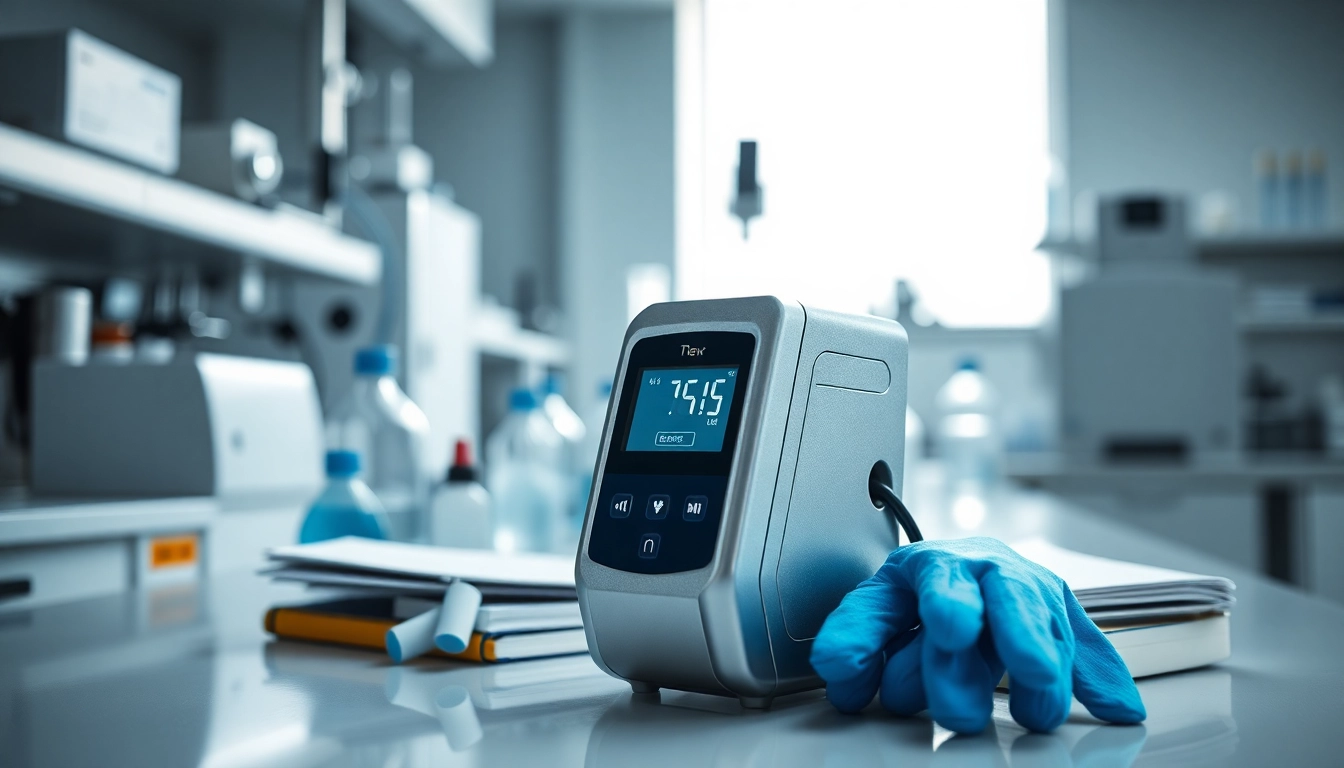
Understanding Propylene Oxide and Its Risks
What is Propylene Oxide?
Propylene Oxide (PO) is a colorless, volatile organic compound with a sweet odor, primarily utilized in producing polyurethane foams, antifreeze, and chemical intermediates. As a crucial ingredient in many industrial applications, it is crucial to understand its properties and the potential hazards associated with exposure. It has a rapid evaporation rate, making it a common compound in various manufacturing processes. In settings where propylene oxide is present, implementing a reliable Propylene Oxide detector becomes essential for ensuring worker safety and regulatory compliance.
Health Hazards Associated with Propylene Oxide
Exposure to propylene oxide can pose significant health risks. The primary effects of inhalation primarily include respiratory tract irritation, headaches, dizziness, and central nervous system effects. Prolonged exposure can lead to more severe health issues, including potential carcinogenic effects, especially when combined with certain other chemicals. Furthermore, skin contact can result in irritation or allergic reactions. Regular monitoring and immediate detection through a dedicated detector can mitigate these risks considerably, providing a safer working environment.
Regulatory Standards for Propylene Oxide Exposure
Government and international bodies have established strict regulatory standards governing the permissible exposure levels of propylene oxide. The Occupational Safety and Health Administration (OSHA) has set the permissible exposure limit (PEL) at 100 parts per million (ppm) averaged over an 8-hour work shift. Additionally, the American Conference of Governmental Industrial Hygienists (ACGIH) recommends a threshold limit value (TLV) of 2 ppm. Compliance with these standards is critical, not only for employee health but also for maintaining operational certifications and avoiding legal liabilities.
The Importance of Detecting Propylene Oxide
Why Use a Propylene Oxide Detector?
Utilizing a propylene oxide detector is vital for workplace safety and health. These detectors help identify potentially harmful concentrations of propylene oxide in the air, facilitating early intervention and preventing adverse health effects on workers. They also help employers comply with regulatory standards, thus avoiding penalties or closure due to safety violations. Moreover, reliable detection systems can improve overall operational efficiency by minimizing downtime due to safety incidents.
Types of Detectors Available in the Market
In the market, several types of detectors are designed specifically for detecting propylene oxide. These include:
- Portable Detectors: Ideal for personal monitoring and use in confined spaces, these are battery-operated and allow for flexible placement.
- Fixed Detectors: Installed in locations where propylene oxide is used or stored, these continuously monitor the environment and provide real-time alerts.
- Wireless Detectors: Incorporating advanced technology, these detectors communicate alerts to a central system without physical wiring, offering versatility and ease of use.
Key Features to Look for in a Detector
When selecting a propylene oxide detector, consider the following key features:
- Sensitivity: Look for detectors that can accurately sense low levels of propylene oxide, especially in sensitive environments.
- Response Time: A quick response time is essential for immediate hazard identification.
- Calibration Options: Ensure the detector allows for easy calibration to maintain accuracy over time.
- Data Logging: Detectors that log data help track exposure levels over time and can assist in compliance reports.
- Alarm Systems: Reliable audio and visual alarms are critical for alerting personnel during hazardous conditions.
How to Choose the Right Propylene Oxide Detector
Assessing Your Environment and Needs
Choosing the right propylene oxide detector begins with a thorough assessment of your environment and specific needs. Consider factors such as:
- Location: Identify areas where propylene oxide is used or present, including storage sites and operational zones.
- Potential Exposure Durations: Determine whether it’s a short-term or continuous exposure scenario, as this influences the type of detector needed.
- Personnel Training: Assess how familiar staff are with detection systems, which may impact the complexity of the chosen equipment.
Comparison of Top Brands and Models
Several leading brands specialize in gas detection equipment. When comparing models, consider factors such as reliability, user reviews, and warranty offerings. Brands such as Honeywell, RKI Instruments, and Dräger provide highly rated options suited for industrial applications. For instance, the Honeywell GasAlertMicro 5 is known for its portability and sensitivity, making it ideal for confined space applications, while the Dräger X-am 2500 is noted for its robust features and ease of use in various industrial settings.
Cost Considerations and Budgeting
Budgeting for a propylene oxide detector involves evaluating both initial costs and long-term expenses related to maintenance and calibration. Generally, portable detectors range from $300 to $1,500, while fixed detectors can cost between $1,000 and $5,000 depending on features. Don’t forget to account for costs associated with training personnel and conducting regular maintenance, which can add up significantly over time. It’s crucial to weigh the costs against the potential health implications and regulatory liability associated with improper monitoring.
Implementing and Using Your Propylene Oxide Detector
Installation Best Practices
Proper installation of propylene oxide detectors is critical for effective monitoring. Follow these best practices:
- Positioning: Place detectors in well-ventilated areas and near potential leak sources to ensure accurate detection of propylene oxide concentrations.
- Height Considerations: Install detectors at appropriate heights based on whether the gas is lighter or heavier than air. Propylene oxide is slightly heavier, so positioning them closer to the ground is ideal.
- Testing: Conduct thorough system tests after installation to ensure proper operation and response to simulated leak events.
Calibration and Maintenance Procedures
Calibration and regular maintenance are essential to ensure detection systems operate accurately. Standard procedures include:
- Calibration Frequency: Most manufacturers recommend calibrating detectors at least once every six months, or more often in highly variable environments.
- Using Calibration Gases: Ensure you use calibration gases that accurately reflect the concentrations you expect in the workplace.
- Routine Checks: Implement a schedule for routine functionality tests, ensuring that alarms and displays function correctly.
Training Staff on Proper Usage
Staff training is vital to ensure maximized effectiveness of propylene oxide detectors. Training should focus on:
- Understanding Equipment: Employees should be familiar with the detector features, including how to read the display, interpret alarms, and perform maintenance tasks.
- Emergency Protocols: Staff should know procedures to follow in the event of an exposure alarm, including evacuation plans and notification procedures.
- Scenario-Based Training: Conduct drills that simulate potential exposure scenarios to reinforce proper responses to alarms.
Measuring Effectiveness and Compliance
Monitoring Detection Levels and Performance
To ensure the effectiveness of your propylene oxide detection system, regularly monitor detection levels and overall performance. Set up systems to track detection data over time; this can help highlight any irregularities in expected levels. Consider implementing data analysis software that integrates with detection systems to provide comprehensive insights!
Documenting Compliance for Regulatory Bodies
Maintaining records of detection levels, calibration dates, and incident responses is essential for demonstrating compliance with regulatory requirements. Develop a system for documenting:
- Daily Monitoring Logs: Keep daily logs of detection readings and any alarms triggered.
- Calibration Records: Document calibration dates, results, and any adjustments made.
- Training Documentation: Maintain records of training sessions conducted, attendance, and training materials used.
Adapting Safety Protocols Based on Feedback
Continuous improvement is vital in maintaining safety. Regularly review and adapt safety protocols based on feedback gathered during safety meetings, incident reports, and detection data analytics. Involve employees in discussions about enhancing safety processes and addressing any concerns or suggestions they may have. This collaborative approach fosters a culture of safety and empowers staff to contribute to their own well-being.








